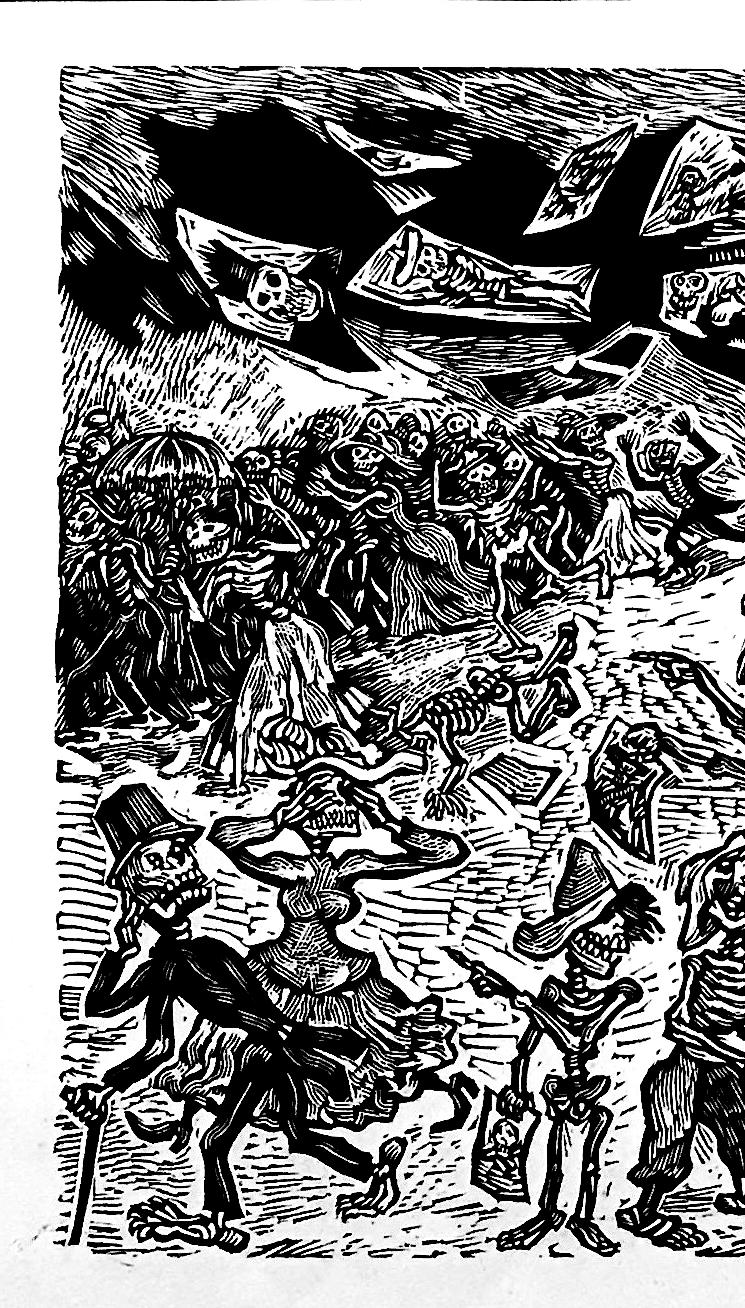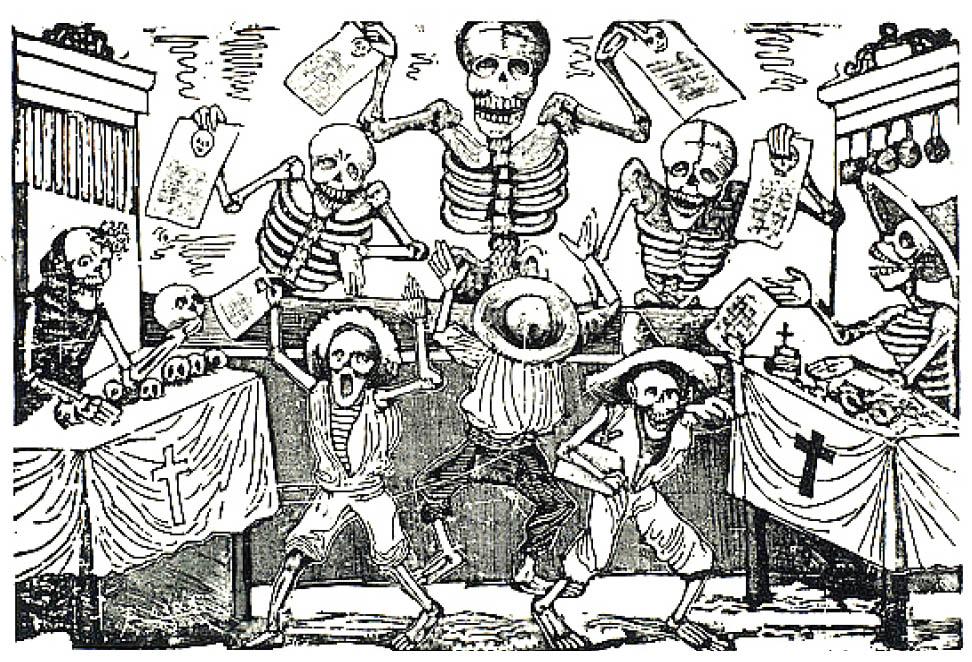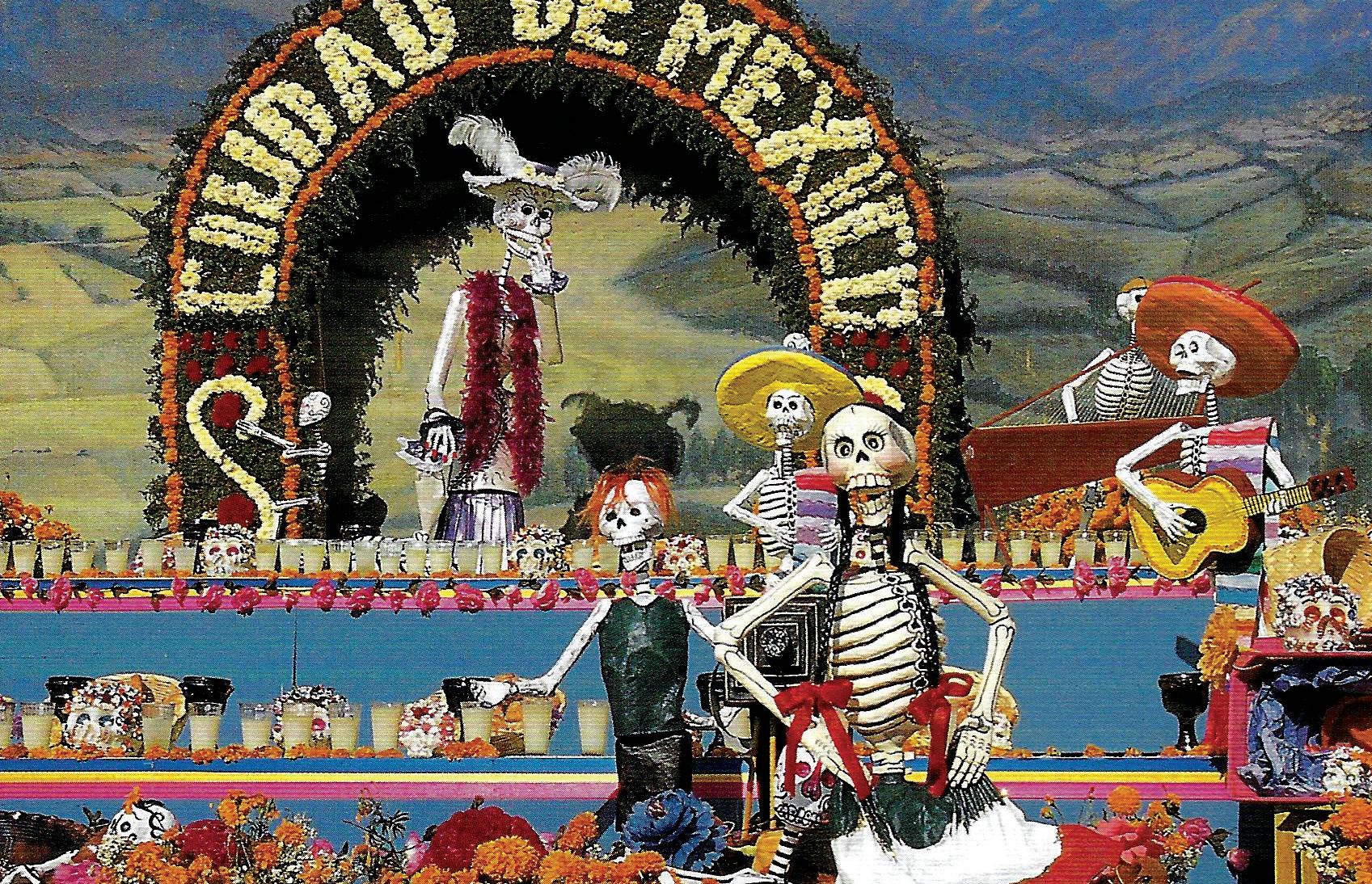
2 minute read
Jose Guadalupe Posada and His Calaveras
José Guadalupe Posada was born in 1852 in Aguascalientes, Mexico. He apprenticed under and later worked for the master printer Jose Trinidad Pedroza, a wood engraver and lithographer at a shop named,El Esfuerzo(The Struggle). ElEsfuerzowas a center where political and social problems were discussed, as well as engraving, lithography, photography, bookbinding, foundry, and blacksmithing. Here Posada began to form his political ideas. Later he began making lithograph prints for a satirical newspaper, El Jicote (The Wasp). Satire is the use of clever or humorous text, pictures, or performance to criticize aspects of society. It can be used to draw attention to societal hypocrisies, shortcomings, and injustices. José Guadalupe Posada began to make satirical prints usingcalaveras or skeletal imagery. He created powerful calavera representations of people rich and poor, famous and infamous, young and old. He also used his art to poke fun at many politicians.
Posada’s calaveras became widely popular across Mexico. His humorous calaveras appealed to many people’s dissatisfaction with the government while at the same time touching upon the universal idea of death. The Mexican muralist Jose Clemente Orozco stumbled into Posada’s shop as a young man, and credits this visit with “awakening him to the art of painting”. Diego Rivera included Posada’s calavera imagery in two of his most famous murals.
Advertisement
The personification of Death, or “La Muerte”, as a calavera meant humans could interact with fate and was a main theme in Posada’s work. This reveals a deeper understanding about Death in Mexican culture. Posada passed away in 1913 at the age of 61. He was buried in a common grave that was later washed out by storm drains. Today he is celebrated through his collection of work in museums and galleries around the world. The popularization of this unique form of art in combination with Day of the Dead established the holiday as an integral part of the Mexican identity.

Alfredo Zalce
Posada y Sus Calaveras (Calavera of Rivera, Orozco, Mendez, and Dr. Atl), 1948 Linocut on paper, 14” x 20” Mexic-Arte Museum Permanent Collection 1985.3.4

José Guadalupe Posada
La Calavera Catrina, c.1912 Reprint of relief etching, dimensions vary Mexic-Arte Museum Permanent Collection
Although originally conceived by Posada’s contemporary Manuel Manilla, the calavera was popularized by Posada. Perhaps the most famous of Posada’s calaveras is La Calavera Catrina, the skeleton of a high-society lady wearing a large, fancy hat. This figure, in particular, has become an iconic symbol of Día de los Muertos, or Day of the Dead. This imagery demonstrates that death will come to everyone—young and old, rich and poor. In Posada’s prints, no one lives; everyone is a skeleton. Nevertheless, the human experience of joy, passion, tumult, and transcience goes on. Death is the subject of mockery here. In similar fashion, the ephemeral nature of Day of the Dead art, whether it be a fragile piece of paper or a sugary candy, acts not as a warning of death’s inevitability so much as a reminder to enjoy the sweetness of life.

José Guadalupe Posada
Rebumbio de Calaveras (Noisy Assembly of Calaveras), n.d. Relief etching on paper, 14 ¼” x 10 ½” Mexic-Arte Museum Collection 1986.1.6









